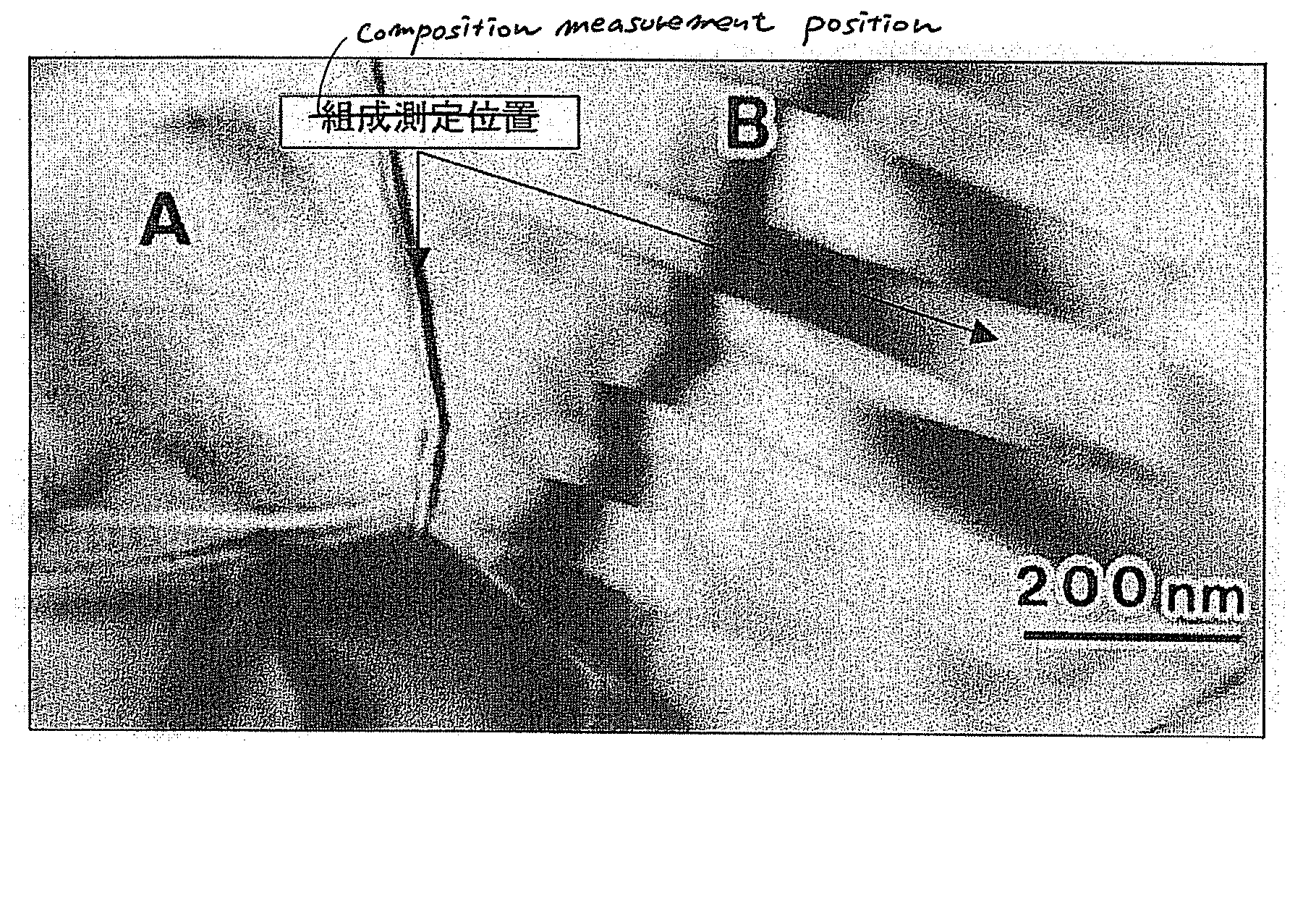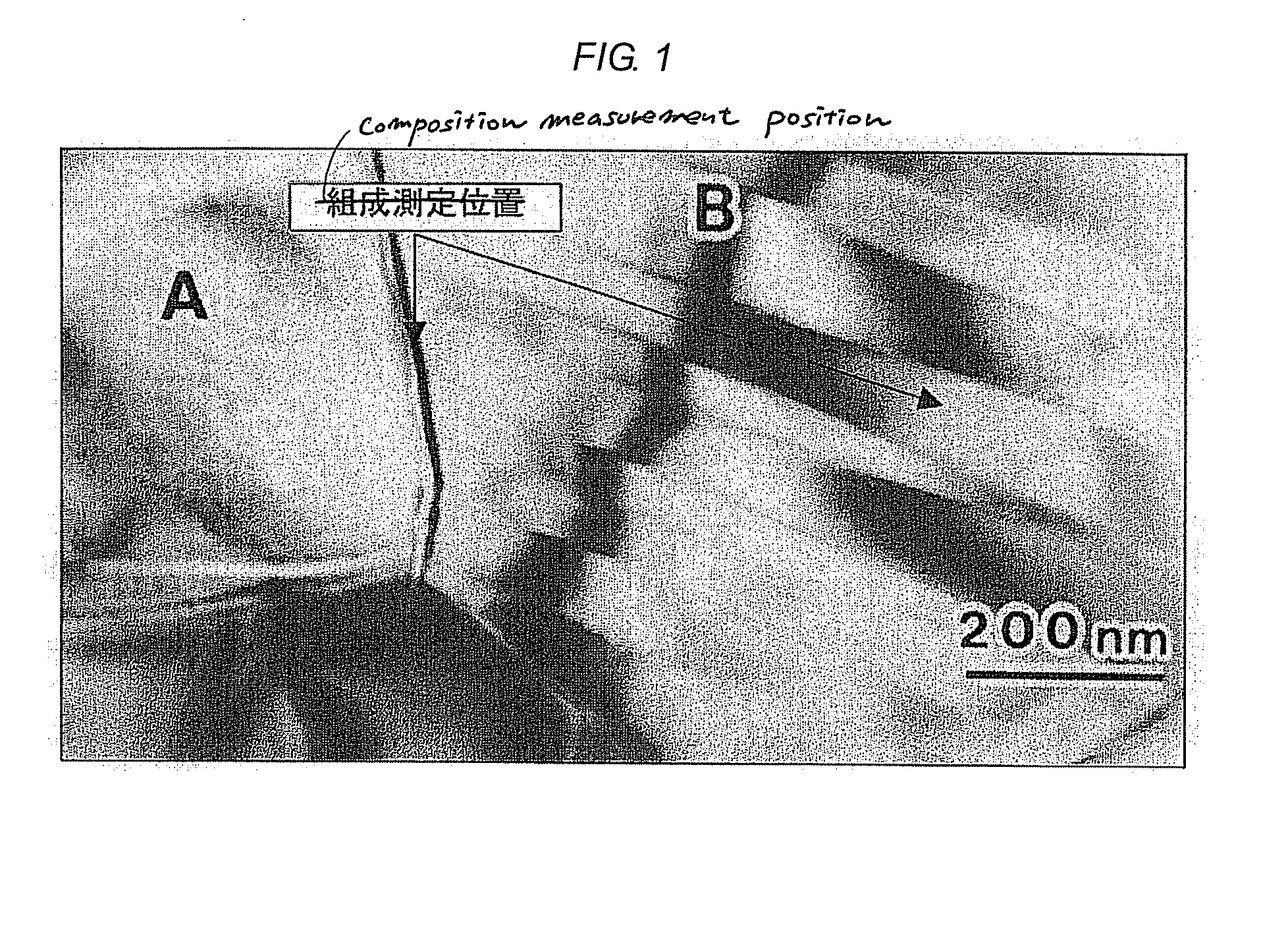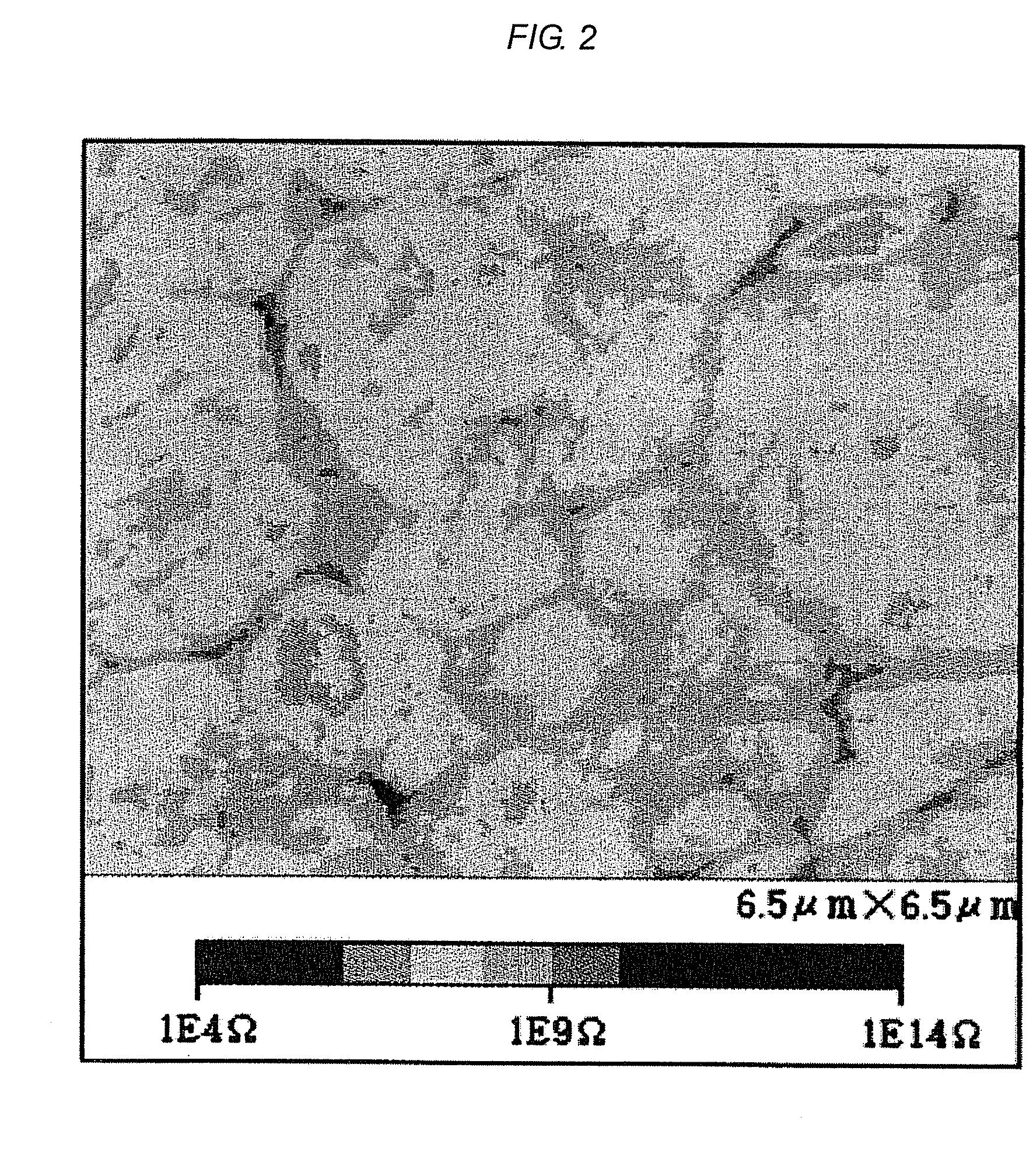Semiconductor ceramic composition
a technology of semiconductors and ceramics, applied in the field of semiconductor ceramic compositions, to achieve the effect of excellent jump characteristic and less subject to thermorunaway
- Summary
- Abstract
- Description
- Claims
- Application Information
AI Technical Summary
Benefits of technology
Problems solved by technology
Method used
Image
Examples
example 1
[0068]Raw material powders of BaCO3, TiO2, and La2O3 were so blended as to satisfy (Ba0.994La0.006)TiO3, followed by mixing with a pure water. The mixed raw material powder thus obtained was calcined in the atmosphere at 1000° C. for 4 hours to prepare a (BaLa)TiO3 calcined powder.
[0069]Raw material powders of Na2CO3, Bi2O3, and TiO2 were so blended as to satisfy (Bi0.5Na0.5)TiO3, followed by mixing in ethanol. The mixed raw material powder thus obtained was calcined in the atmosphere at 800° C. for 2 hours to obtain a (BiNa)TiO3 calcined powder.
[0070]The (BaLa)TiO3 calcined powder and (BiNa)TiO3 calcined powder thus prepared were blended so as to satisfy a target composition after sintering of [(Bi0.5Na0.5)0.08(Ba0.994La0.006)0.92]TiO3, followed by mixing and crushing in a pot mill by using a pure water as a medium until the mixed calcined powder becomes 0.9 μm, and the mixed calcined powder was then dried. PVA was added to the crushed powder of the mixed calcined powder, followed ...
example 2
[0072]BaCO3, TiO2, La2O3, Bi2O3, Na2CO3 were so blended as to satisfy [(Bi0.5Na0.5)0.08(Ba0.994La0.006)0.92]TiO3, followed by mixing in ethanol. The mixed raw material powder thus obtained was calcined in the atmosphere at 1000° C. for 4 hours to obtain a calcined powder. The calcined powder thus obtained was mixed and crushed in a pot mill by using a pure water as a medium until the mixed calcined powder becomes 0.9 μm in a particle size, followed by drying. PVA was added to the crushed powder of the mixed calcined powder, followed by mixing, and the mixture was granulated by using a granulator. The granulated powder thus obtained was formed by using a uniaxial pressing machine, and a binder was eliminated from the compact at 700° C., followed by sintering at a sintering temperature of 1320° C. for 1 hour, thereby obtaining a sintered material. The sintered material thus obtained was processed in the same manner as in Example 1 and measurements were conducted under the same conditi...
example 3
[0075]A (BaLa)TiO3 calcined powder and a (BiNa)TiO3 calcined powder were prepared in the same manner as in Example 1. The (BaLa)TiO3 calcined powder and the (BiNa)TiO3 calcined powder were so blended as to satisfy [(Bi0.5Na0.5)0.08(Ba0.994La0.006)0.92]TiO3, followed by further adding 1 mol % of Bi2O3, and then the mixed calcined powder was mixed and crushed in a pot mill by using a pure water as a medium until the mixed calcined power becomes 0.9 μm in a particle size, further followed by drying. PVA was added to the crushed powder of the mixed calcined powder, followed by mixing, and the mixture was granulated by using a granulator. The granulated powder thus obtained was formed by using a uniaxial pressing machine, and a binder was eliminated from the compact at 700° C., followed by sintering at a sintering temperature of 1320° C. for 1 to 4 hours, thereby obtaining sintered materials. The sintered materials thus obtained were processed in the same manner as in Example 1 and measu...
PUM
| Property | Measurement | Unit |
|---|---|---|
| Curie temperature | aaaaa | aaaaa |
| temperature resistivity | aaaaa | aaaaa |
| temperature resistivity | aaaaa | aaaaa |
Abstract
Description
Claims
Application Information
 Login to View More
Login to View More - R&D
- Intellectual Property
- Life Sciences
- Materials
- Tech Scout
- Unparalleled Data Quality
- Higher Quality Content
- 60% Fewer Hallucinations
Browse by: Latest US Patents, China's latest patents, Technical Efficacy Thesaurus, Application Domain, Technology Topic, Popular Technical Reports.
© 2025 PatSnap. All rights reserved.Legal|Privacy policy|Modern Slavery Act Transparency Statement|Sitemap|About US| Contact US: help@patsnap.com



